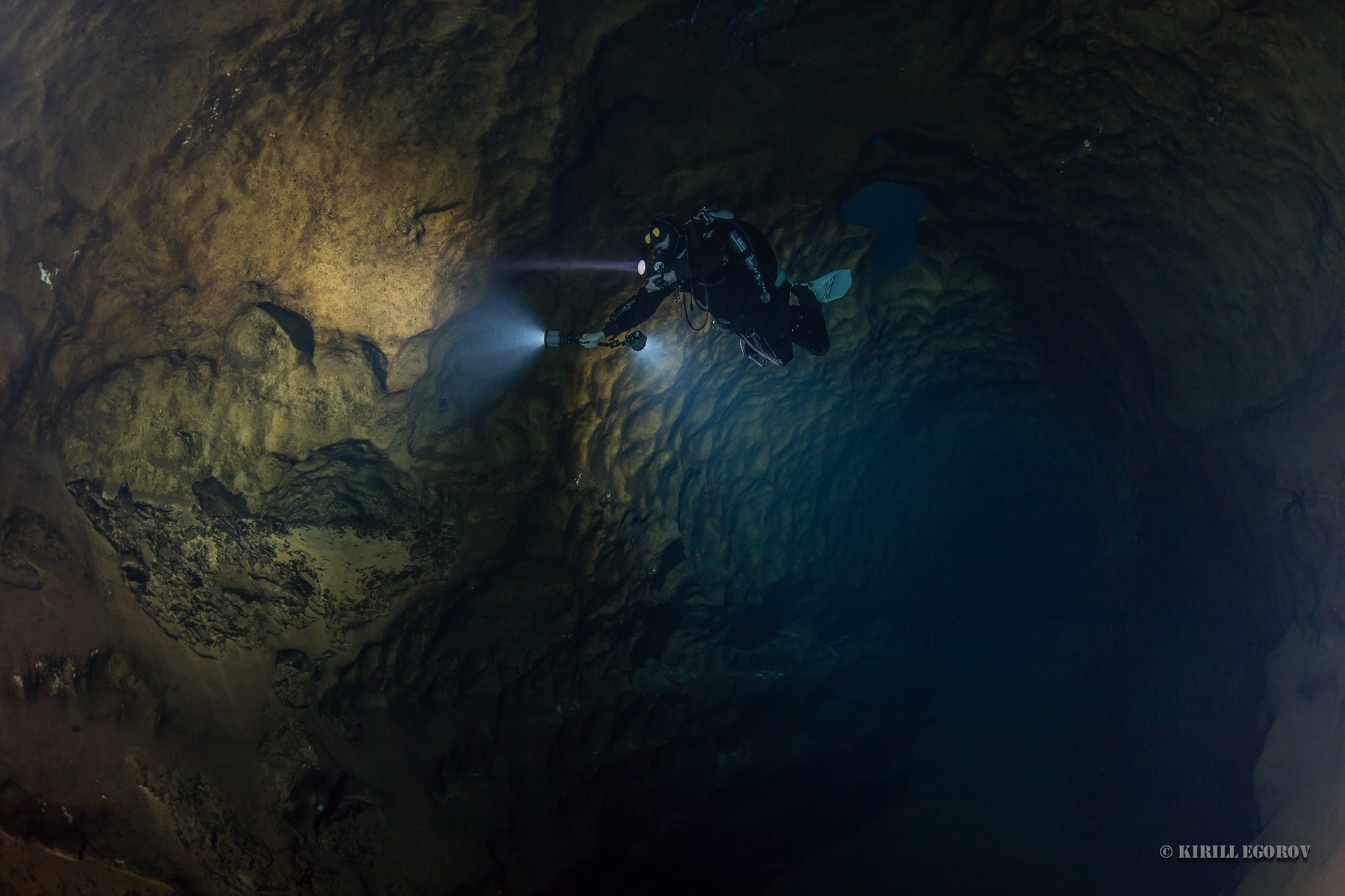Little Spring (Twin Dees) is located within the town of Weeki Wachee, approximately 0.5miles southeast of Weeki Wachee Main Spring. The spring is located in back of the main parking lot adjacent south of Weeki Wachee Main Spring. A sand track leads to the spring beyond a locked gate. The spring is surrounded by a locked chain link fence and is not accessible to the public.
Description – Little Spring is also known as Twin Dees Spring. The spring pool measures 36 ft east to west and 75 ft north to south. Two vent openings occupy the oval spring pool. The spring measures 13 ft deep over the south vent. The spring water is clear and blue-greenish. There was a moderate boil on the water surface over the south vent where water samples were taken in March 2003. The north vent was not flowing during either of the visits. Two spring runs that eventually merge exit the spring pool and flow generally northward into the Weeki Wachee River. The smaller of the two runs exits the pool on the west, and the larger exits on the north side. The surroundings to the east are recently cleared upland sand hills. To the west is a dense swamp forest along theWeeki Wachee River. In the Spring of 2002, Little Spring was not flowing, and the springrun was dry. By March 2003, the spring was again flowing, and the spring run averagedabout 10 ft wide and 1.5 ft deep. An underwater cave has been mapped in this spring.
Utilization - The spring is undeveloped and surrounded by SWFWMD land. Currently access is permited to members of Karst Underwater Research for their on-going project.
Karst Underwater Research has been exploring the Weeki Wachee and Twin Dees cave systems since 1996. Both springs are on State Park property and require a permit to dive them. The main Weeki Wachee Spring is well known as a tourist attraction for the underwater mermaid shows held there daily, but until 2007 no significant exploration of the cave system had taken place due to the very high flow present in the entrance fissure. During 3 separate periods of low aquifer water levels in 2007, 2009 and 2012 a significant amount of underwater cave passage was explored to a maximum depth of 407 ffw. On the same property lies Twin Dees Spring (Little Spring), initially explored by Paul Heinerth and Sheck Exley in the 1970s and 80s. In 1996 Jeff Petersen and Dave Miner of KUR discovered an enormous underground room and deep spring tunnel at 300 ffw which they named Middle Earth and the Alph Tunnel respectively. Further exploration of this system did not occur until 2011, when Brett Hemphill and Andrew Pitkin extended the Alph Tunnel to the southeast in the direction of Weeki Wachee. Continued effort over the next 3 years resulted in a large amount of new passage being explored, almost all of it deeper than 300 ffw, and the eventual connection of the two systems on September 13th, 2014.
Content from KUR

